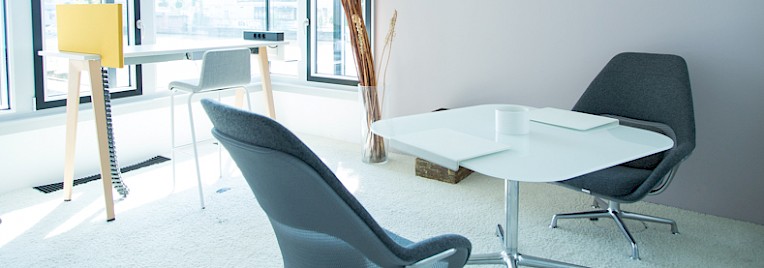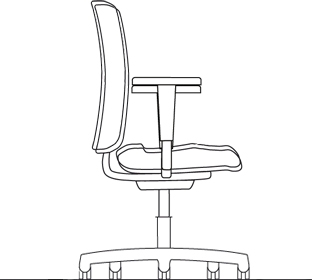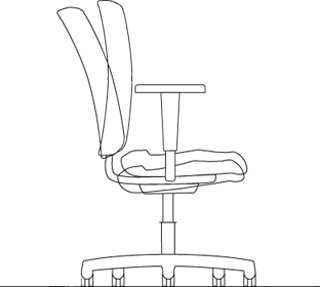
Furniture
Swivel chairs
Find out more
Quality criteria for office chairs



Principles of good seating:
- The swivel chair has a GS mark signifying “tested for safety”.
Among other things, the GS mark guarantees the chair’s stability, strength and durability. GS-tested products comply with current standards. - The height of the seat surface is adjustable.
Adjusting the seat area to the right height avoids congestion of the blood vessels in the user’s legs. This is the basis of a relaxed sitting posture. - The seat surface is spring-mounted.
When the user sits down, the seat bounces slightly. This prevents jolts to the spine. - The backrest is sufficiently high.
The backrest should reach at least to the user’s shoulder blades in order to sufficiently support the entire body. - The backrest provides lumbar support that can be clearly felt.
The protrusion of the backrest in the lower back area supports the back especially when the user is sitting upright. The lumbar support should be clearly felt, but it should not exert any pressure on the spine when the user leans back. - The height of either the entire backrest or the lumbar support should be adjustable.
The user’s back is correctly supported only if the lumbar support has been adjusted to the height that is right for the individual. - The office chair makes dynamic sitting possible.
A synchronization mechanism is typically used for this purpose. When the user leans back, the backrest tips back. The seat surface also tips back. The office chair follows the user’s natural movements. - The office chair has armrests whose height can be adjusted.
Armrests relieve pressure on the shoulder area and prevent muscle tension. They also help the user to sit down and get up without straining the back. - The armrests or arm supports can either be swivelled or their width can be adjusted.
This ensures that each user can use the armrests properly and will not feel cramped. - The cross-shaped base is equipped with rollers that are suited to the floor covering.
Hard rollers with a single-colour lateral surface may be used only on wall-to-wall carpeting and other soft floor coverings. Soft rollers for floors made of wood, stone and other hard surfaces can be identified by their two-tone lateral surfaces.
Other points to note:
- A large opening angle when the user leans back
Backrests that tip back only a few degrees provide very little relief for the spine. The backrest should be able to tip backward at least 30 degrees. - No “shirt off” effect
When the user leans back, the backrest must move in perfect coordination with the user’s back. If the backrest moves upward, the height of the lumbar support will be changed. This can cause uncomfortable pressure and the “shirt off” effect. - No rising of the front edge of the seat
If the front edge of the seat rises perceptibly rises when the user leans back, there is pressure on the underside of the thighs. This leads to poor blood circulation. - Adaptation to the user’s weight
The counterpressure of the backrest must be adjustable so that it matches the user’s body weight. The user must be able to lean back without pushing. On the other hand, the backrest should also support the user’s return to an upright posture by slightly pushing on the user’s back. The user must be able to make adjustments while sitting. Adjustment elements that can be used while sitting upright are ideal.
For more mobility while sitting:
- The 3D effect
Office chairs of the latest generation combine dynamic sitting with lateral movability of the seat area and/or the backrest.

Especially in the Anglo-American region, workplaces are occasionally equipped with a combination of standing desks (whose height cannot be adjusted) and counter stools. German employers' liability insurance associations reject this option. It does enable users to switch between sitting and standing, but the overall range of movement is significantly limited. This also applies to sitting balls, stools and kneeling chairs.

